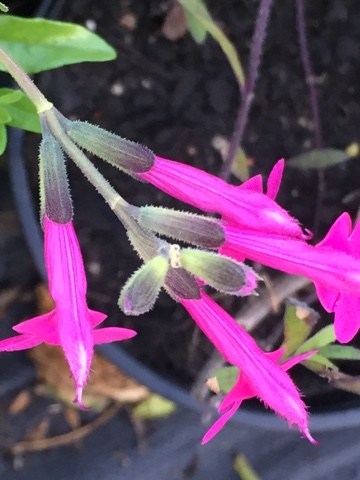Epiphyllum anguliger
When this flowered a couple of months ago I didn't think to stick my nose up close to indulge in the scent. It was only after reading the perfume being described as 'delicious' by horticulturist Edward Kemp (1910-2012) (Yep he lived to 101) curator of the RBG Edinburgh from 1950 to 1971, that I knew I might now have to wait a whole year to experience that treat.
Kemp's description of this species is in his occasionally off kilter translation from the German of Das praktische Kakteenbuch in Farben by Walther Haage 1961 , 'Cacti and Succulents' Studio Vista 1963.
Apparently 'Epi' cactus have been around since 1689 when they were described by Dutch botanist Herman Boerhaave (1668-1738) at the Hortus Botanicus Leiden. Hence from him epi = upon and phyllum = leaf.
Growing it gives the usual challenge of finding a sturdy enough, large enough container in which to place it. Branches grow every which way and arch down to ground level presenting that temptation to passing snails which they can hardly resist. While relatively small in root system, the branches carry quite a bit of weight and as the plants require a light free draining orchid style potting mix, it is worth placing some stones around the base of the plant to keep it from being wrenched out of the ground in windy conditions. Though I have grown it successfully from cuttings, many have succumbed to rot from over-wet conditions. So a spot with summer shade and a warm dry bright position over winter would suit it best, with the occasional dose of liquid fertilizer to keep it healthy.















